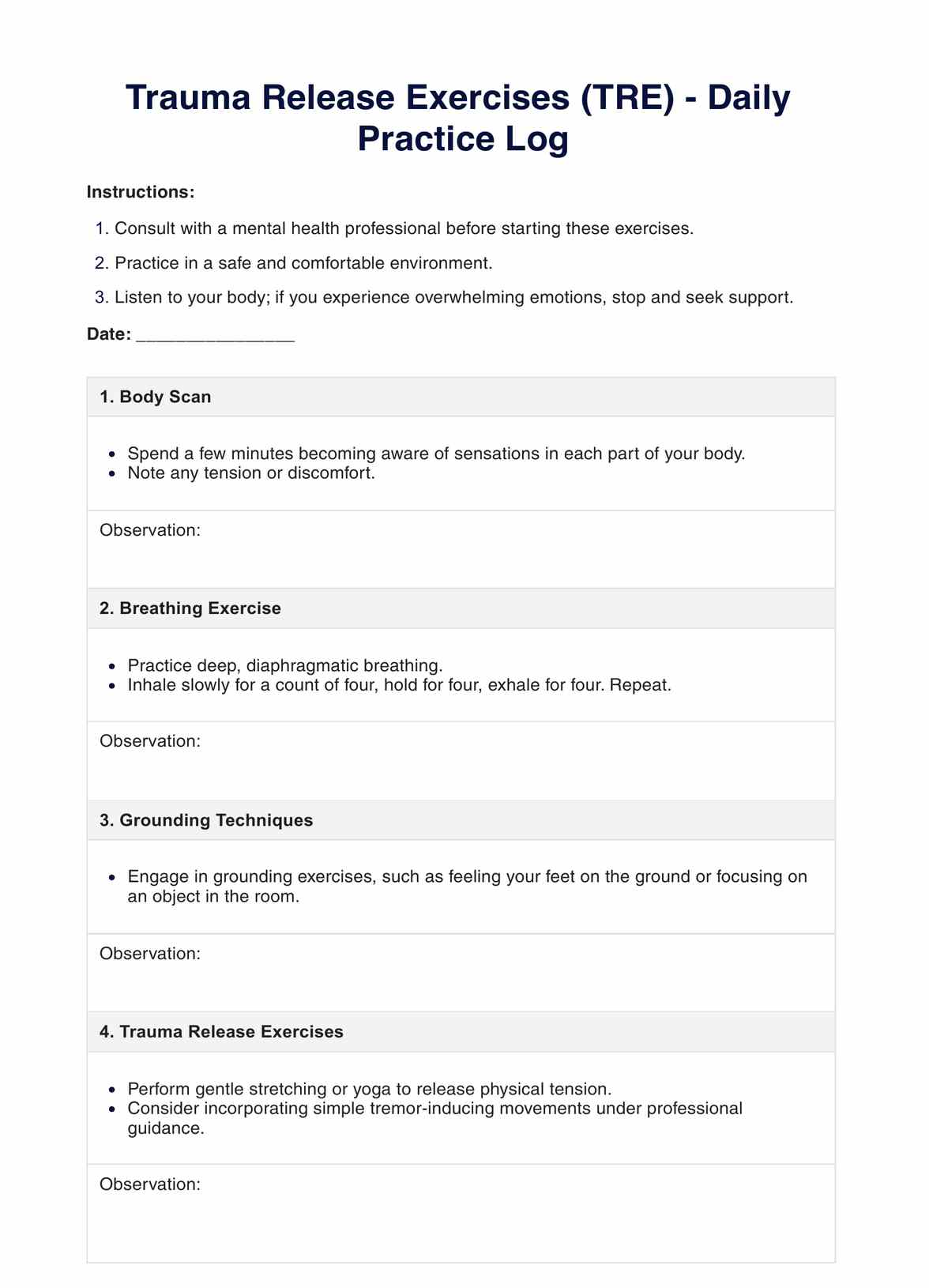Trauma-release exercises, such as bodily movement, progressive muscle relaxation, and mindfulness-based practices, are practical in releasing stored trauma. These exercises focus on the mind-body connection, gradually releasing tension and promoting emotional well-being.

Trauma Release Exercises PDF
Learn about trauma release exercises and discover a free PDF download from Carepatron with examples to help you release tension and promote healing.
Trauma Release Exercises PDF Template
Commonly asked questions
The shaking exercise, also known as therapeutic tremoring, involves intentionally inducing tremors in the body. This natural response helps release stored tension and trauma, promoting a sense of relaxation and restoring balance to the nervous system.
While trauma release exercises generally promote well-being, some individuals may experience temporary side effects such as emotional release, fatigue, or heightened awareness. These responses are often part of the healing process and can vary based on individual experiences.
EHR and practice management software
Get started for free
*No credit card required
Free
$0/usd
Unlimited clients
Telehealth
1GB of storage
Client portal text
Automated billing and online payments











